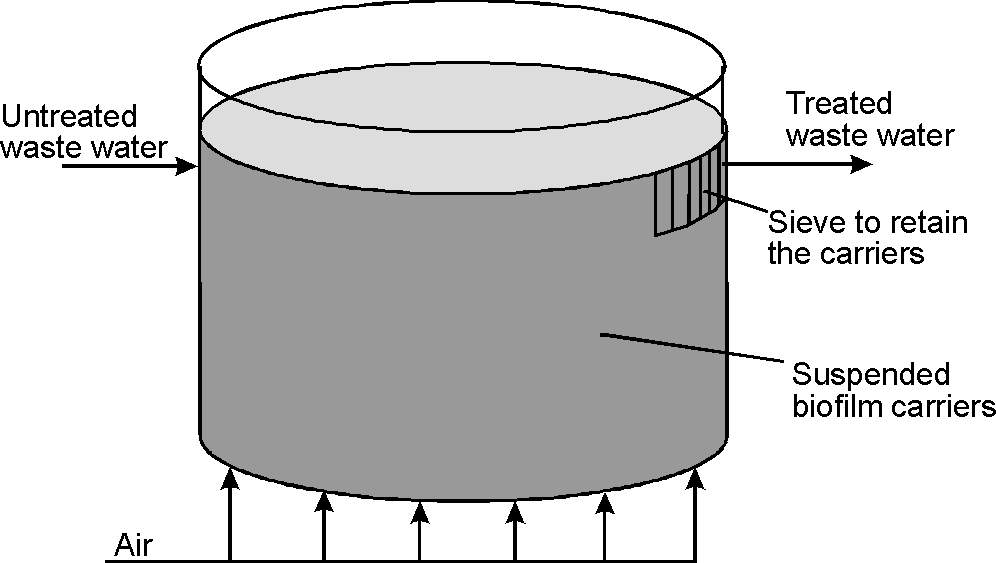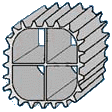Principle for the Moving Bed Biofilm process
In the Moving Bed Biofilm process the biomass is growing as a film on small carrier elements that move along with the water in the reactor. Air is introduced at the bottom of the reactor, mixing the reactor contents and keeping the carriers, which have density close to water, in suspension and continuos movement.
The carriers, and thereby the micro-organisms, are retained in the reactor by means of a grid or a sieve at the outlet of the reactor. Excess sludge loosens from the carriers and follows the water out of the reactor.

For a high performance the micro-organisms needs organic material, air (>3 mg/l O2), additional nutrients as Phosphor and Nitrogen, a temperature between 25 and 35 C and a pH between 6,5 and 8,5.
The principle with a Moving Bed Biofilm brings the following advantages compared to conventional biological methods:
The amount of active biomass brought in contact with the waste
water is very high.
The biological process is very fast, thus very short retention
time is needed which gives small plants with low investment
costs.
The process is, in contrast to Activated Sludge which needs
pre-sedimentation, not disturbed by solid particles in the waste
water
The process is insensitive to disturbances and variations in the
incoming waste waters. The biological reduction reaches normally
full capacity in less than 24 hours by accidental elimination of
the bacteria, compared to 1-2 weeks for the Activated Sludge
process.
here is no risk for clogging as in the Fixed Bed processes.
There is no circulating sludge as in the Activated Sludge process, which improves the availability and simplifies the process controlling. Less risk for lack of oxygen and the following problems with odorous gases since the amount of organic material is relatively small, i.e. the sludge age is low. It is easy to enlarge the capacity in case the flow and/or the organic load would increase in the future
The carriers can, if necessary, quite easily be pumped in and out for an example continuos cleaning of the carriers
The process can with advantage be divided in two steps. Normally the main reduction of organic material occurs in the first reactor by bacteria. The second step is also dominated by bacteria, but there is a large amount of higher micro-organisms which consumes bacteria and thus increases the biomass and the sizes of the flocks. This improves the following separation of biomass. The second step buffers the reduction in case the first step activity is hampered by disturbing substances.
Today there are 7 full scale plants in Northern Europe Pulp and Paper industry using this technique, and additional 4 are under construction. Other applications are in the Provision industry and for municipal treatment plants.
 The carriers
have a potential growth area of biofilm of about 500 m2/m3 of
carrier. Because the growth is much less on the outside of
the cylindrical carriers than on the sheltered inside area,
the practical specific growth area is expected to be about
350 m2/m3 of carrier.
The carriers
have a potential growth area of biofilm of about 500 m2/m3 of
carrier. Because the growth is much less on the outside of
the cylindrical carriers than on the sheltered inside area,
the practical specific growth area is expected to be about
350 m2/m3 of carrier. 
